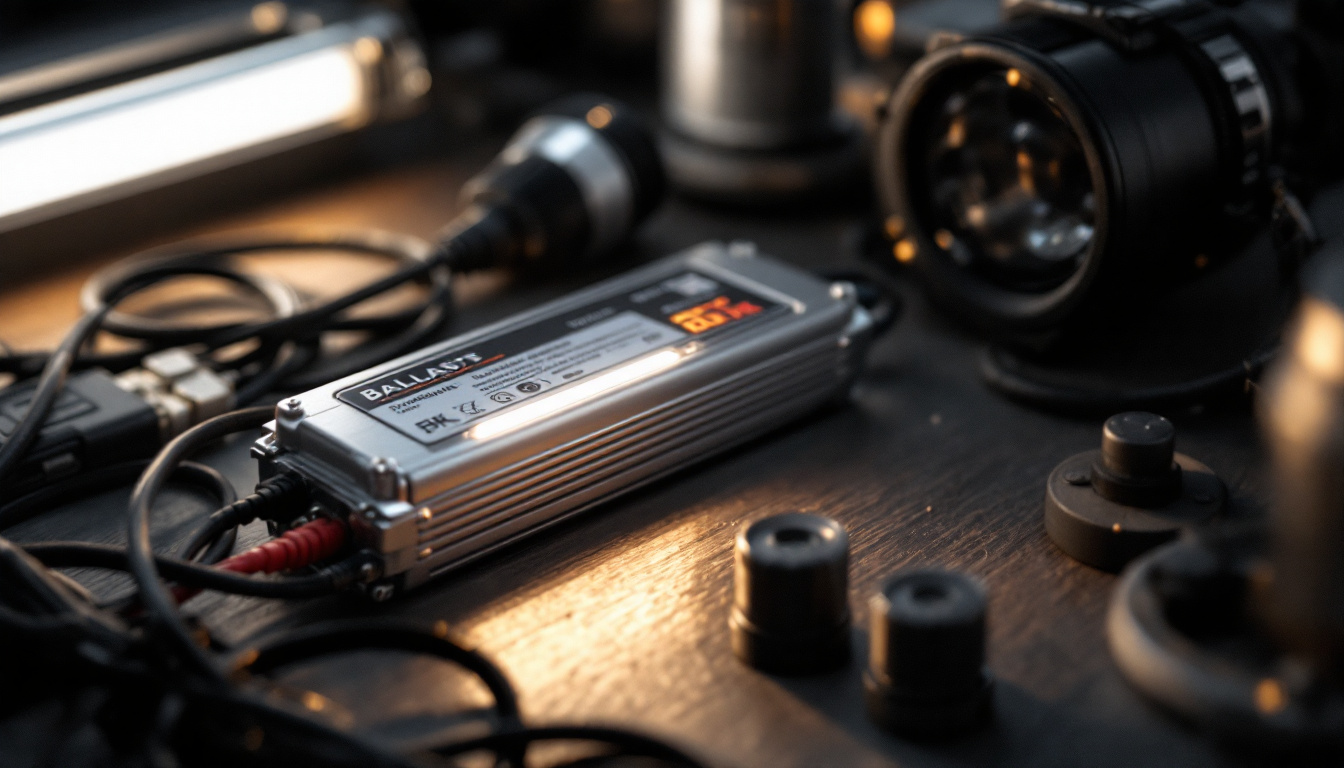
In the realm of lighting design and installation, the focus often falls on the aesthetics and functionality of light fixtures. However, one crucial component that frequently goes unnoticed is the ballast. This essential device plays a pivotal role in the performance and longevity of lighting systems, particularly in fluorescent and HID (high-intensity discharge) fixtures. Understanding the importance of ballasts can significantly enhance the outcome of lighting projects, making them more efficient and reliable.
At its core, a ballast is an electrical device that regulates the current to the light source. It serves multiple functions, including providing the initial voltage needed to start the lamp and controlling the current during operation. Without a properly functioning ballast, light fixtures can experience flickering, reduced efficiency, and even premature failure. In addition to these basic functions, ballasts also play a crucial role in enhancing the safety and longevity of lighting systems, as they help to prevent electrical surges that could damage both the lamp and the fixture itself.
Ballasts come in various types, each designed for specific applications. The most common types include magnetic and electronic ballasts. Magnetic ballasts are traditional and often found in older lighting systems. They are generally more robust but can be less energy-efficient and bulkier than their electronic counterparts. These ballasts operate using electromagnetic induction, which can create a humming sound that some users find undesirable.
Electronic ballasts, on the other hand, are more modern and offer several advantages. They are lighter, more compact, and provide better energy efficiency. Additionally, electronic ballasts can operate at higher frequencies, which reduces flicker and improves the overall quality of light. This higher frequency operation also allows for smoother dimming capabilities, making electronic ballasts a preferred choice in settings where adjustable lighting is necessary, such as in theaters or conference rooms. Understanding the differences between these types can help contractors select the best option for their specific projects.
Choosing the right ballast is critical for the success of any lighting project. The ballast must be compatible with the type of lamp being used, as well as the specific requirements of the installation environment. For instance, using a ballast designed for a T8 lamp in a T5 fixture can lead to inefficiencies and potential damage. Furthermore, the environmental conditions, such as temperature and humidity, can also influence the choice of ballast, as some are designed to withstand harsher conditions than others.
Moreover, the ballast’s wattage rating should align with the lamp’s specifications. An underpowered ballast can lead to insufficient light output and reduced lifespan, while an overpowered ballast may cause overheating and failure. Therefore, careful consideration and consultation with manufacturers or suppliers can ensure that the right ballast is selected for each unique application. Additionally, advancements in smart technology have led to the development of programmable ballasts, which can adjust their output based on real-time lighting needs, further enhancing energy efficiency and user control in modern lighting systems. This adaptability not only contributes to cost savings but also supports sustainability initiatives by reducing overall energy consumption.
Despite their importance, ballasts can often be overlooked during the planning and installation phases of lighting projects. This oversight can lead to a range of issues that may compromise the effectiveness of the lighting system.
One of the most common problems associated with faulty ballasts is flickering lights. This issue can be particularly frustrating for both contractors and end-users, as it not only affects the aesthetic appeal of the lighting but can also lead to discomfort and distraction. Flickering is often caused by an aging or malfunctioning ballast that fails to provide a consistent current to the lamp.
To mitigate this problem, contractors should routinely inspect ballasts during maintenance checks and replace any that show signs of wear or failure. Additionally, opting for high-quality electronic ballasts can significantly reduce the likelihood of flickering in new installations. Furthermore, it is essential to consider the compatibility of the ballast with the type of lamp being used, as mismatches can exacerbate flickering issues and lead to premature lamp failure.
Another significant concern with improper ballast selection is reduced energy efficiency. Ballasts that are not matched correctly to their corresponding lamps can lead to increased energy consumption, resulting in higher utility bills for end-users. This inefficiency not only affects the operational costs but also undermines the environmental benefits of energy-efficient lighting solutions.
Contractors should prioritize energy-efficient ballasts, particularly in commercial settings where lighting accounts for a substantial portion of energy use. Utilizing advanced technologies, such as dimmable ballasts, can further enhance energy savings while providing flexibility in lighting design. Additionally, integrating smart lighting controls can optimize energy usage by adjusting the lighting levels based on occupancy or natural light availability, thereby maximizing both efficiency and comfort in the space.
To ensure optimal performance and longevity of lighting systems, contractors should adhere to best practices when installing ballasts. These practices not only enhance the reliability of the lighting but also contribute to the overall satisfaction of clients.
Each ballast comes with specific installation guidelines provided by the manufacturer. These guidelines include information on wiring configurations, mounting options, and compatibility with various lamp types. Following these instructions is crucial for ensuring proper functionality and safety.
Moreover, staying updated with any changes or advancements in ballast technology can provide contractors with insights into the latest best practices, ensuring that installations are both efficient and compliant with industry standards. For instance, many manufacturers now offer online resources, webinars, and training sessions that can help contractors familiarize themselves with new products and installation techniques. Engaging with these resources not only enhances the skill set of the installation team but also fosters a culture of continuous improvement and learning within the organization.
Routine maintenance and inspections are essential for prolonging the lifespan of ballasts and the fixtures they support. Contractors should establish a regular schedule for checking ballasts, looking for signs of wear, and addressing any issues promptly. This proactive approach can prevent costly repairs and downtime in the future.
During these inspections, it is also beneficial to assess the overall lighting system, ensuring that all components are functioning harmoniously. This holistic view can help identify potential problems before they escalate, allowing for timely interventions. Additionally, documenting the maintenance process can provide valuable insights into the performance trends of the lighting systems over time. By maintaining detailed records, contractors can better predict when components may need replacement or upgrading, ultimately leading to more informed decision-making and enhanced service delivery for their clients.
As the lighting industry continues to evolve, so too does ballast technology. Innovations in this field are paving the way for smarter, more efficient solutions that can adapt to the changing needs of users and environments.
One of the most exciting developments in ballast technology is the emergence of smart ballasts. These devices integrate with building management systems, allowing for real-time monitoring and control of lighting systems. Smart ballasts can adjust output based on occupancy, ambient light levels, and other factors, leading to significant energy savings and enhanced user comfort.
Contractors who embrace smart ballast technology can offer clients cutting-edge solutions that not only improve energy efficiency but also enhance the overall user experience. As the demand for smart building solutions grows, staying informed about these advancements will be crucial for maintaining a competitive edge in the market. Furthermore, the data collected by smart ballasts can provide valuable insights into usage patterns, enabling facilities managers to optimize lighting schedules and reduce operational costs. This level of intelligence in lighting systems is not just a trend; it represents a fundamental shift towards more sustainable and responsive building environments.
The transition to LED lighting has also influenced ballast technology. While many LED fixtures operate without traditional ballasts, some applications still require them. LED ballasts are designed specifically for use with LED lamps, providing the necessary power and control while maximizing efficiency.
Contractors should be aware of the unique characteristics of LED ballasts, including their compatibility with various LED technologies and their potential for dimming capabilities. By understanding these nuances, contractors can make informed decisions that enhance the performance of LED lighting systems. Additionally, the integration of LED ballasts with smart technology can further amplify energy savings and extend the lifespan of lighting fixtures. As the industry shifts towards more sustainable practices, the development of high-performance LED ballasts that can seamlessly work with smart systems will be essential in meeting both regulatory standards and consumer expectations.
The importance of ballasts in lighting projects cannot be overstated. As the missing piece in many installations, they play a crucial role in ensuring the efficiency, reliability, and longevity of lighting systems. By understanding the various types of ballasts, their functions, and the common issues associated with them, contractors can make informed decisions that lead to successful lighting projects.
Moreover, adhering to best practices during installation and maintenance can significantly enhance the performance of ballasts and the fixtures they support. As the industry continues to evolve, staying informed about advancements in ballast technology will empower contractors to offer innovative and efficient solutions to their clients.
In the ever-competitive lighting market, recognizing the significance of ballasts can set contractors apart, ensuring that they deliver high-quality, reliable lighting solutions that meet the needs of their clients. By prioritizing the selection, installation, and maintenance of ballasts, contractors can illuminate their projects with confidence, knowing they have addressed this critical component of lighting design.
Ready to enhance your lighting installations with the highest quality ballasts and fixtures? Look no further than LumenWholesale. Our spec-grade lighting products are designed to meet the rigorous demands of any project, ensuring efficiency, reliability, and longevity. With unbeatable wholesale prices and free shipping on bulk orders, you can trust that you’re getting the best value without any hidden fees. Elevate your lighting game and discover the superior selection at LumenWholesale — where quality meets affordability and convenience.

Discover the transformative impact of 2X2 LED drop ceiling lights on modern lighting projects.

Discover how 8 foot fluorescent light fixtures can transform your lighting projects with enhanced brightness, energy efficiency, and cost savings.

Discover how the brightest motion sensor lights can revolutionize your lighting installation projects.

Explore the transformative journey of High Intensity Discharge (HID) light bulbs in the lighting industry.